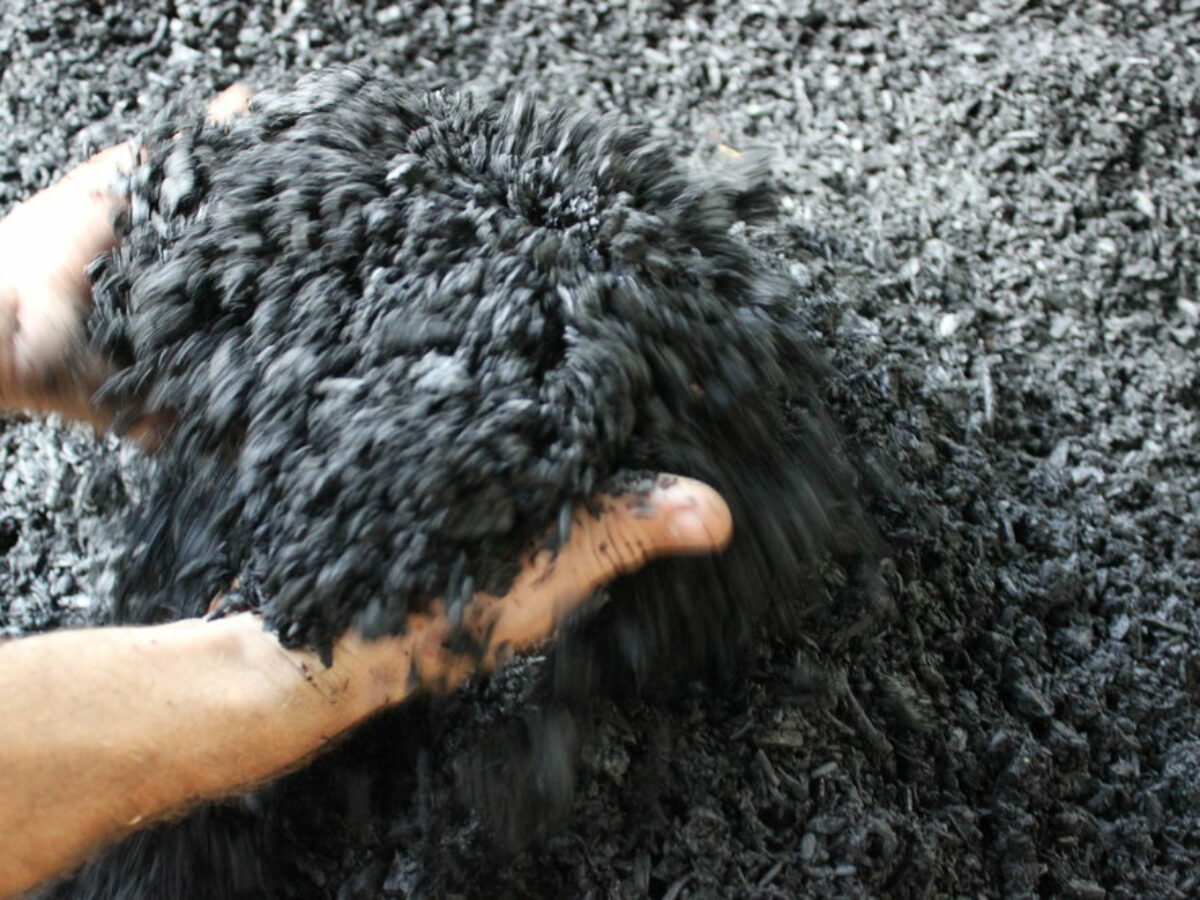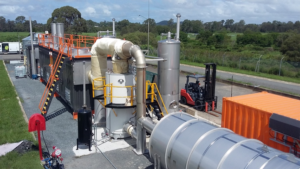Biochar: an ancient waste-to-value product

A miracle all-in-one soil improver, waste disposer and planet saviour, or a biomassive waste of time? Brent Balinski spoke to manufacturers and others about the place of charred organic matter in our future.
A bit over a decade ago, biochar seemed to be having a moment. It was an ancient farming trick that had been rediscovered, and promised solutions for rising carbon dioxide levels in the atmosphere, mountains of agricultural waste, and depleted soils.
“Biochar may represent the single most important initiative for humanity’s environmental future,” Professor Tim Flannery, scientist and environmentalist, is quoted as saying during that era.
Some of the findings from a flurry of research back then highlighted the usefulness of it in sequestering carbon, improving soil structure, and boosting nutrient retention and water-holding capacity, Soil CRC CEO Dr Michael Crawford says.
“However, the economics of biochar don’t add up in most commercial operations,” he tells @AuManufacturing.
“There are also difficulties in obtaining sufficient quantities of biochar because there is no large-scale production (a classic chicken and egg situation – too costly because there is not enough demand; not enough demand because it is too costly.)”
Biochar is still of interest, though. This month it emerged that Microsoft was looking to Australian company Rainbow Bee Eater to remove 400 megatonnes of CO2, as part of the US software giant’s goal to be carbon negative by 2030. This was one of three biochar project purchases listed in its white paper on the subject.
Biochar is charcoal made through pyrolysis or gasification of biomass, decomposing these in a kiln at temperatures generally below 800 degrees Celsius in the presence of little or no oxygen. Charred material is produced, as well as syngas (which can be used as fuel) and bio-oil, which is another potential fuel source.
Biochar is a stable type of carbon, meaning it can be used to sequester this and not release it into the atmosphere for some time (how long varies depending on factors including feedstock and pyrolysis conditions. These and other variations also have a major impact on the properties of the char.)
Biochar can help lower greenhouse gases in the atmosphere in three ways: stably holding carbon in the ground, lowering emissions of methane and CO2 as waste breaks down, and creating renewable energy.
It is not a new product, and most articles on the topic mention its presence in the terra preta (Portuguese for black soil) cultivated by Amazonian Indians. Some of these deposits have been carbon dated as at least 7,000 years old.
According to Kathleen Draper, co-author of Burn: Using Fire to Cool the Earth and chair of the International Biochar Initiative, these soils are four to five times as fertile as those in the surrounding rainforest.
Draper tells @AuManufacturing that pyrolysis and biochar’s usefulness saw them recognised by the Intergovernmental Panel on Climate Change in 2018 as “as one of a very few negative emissions technologies that were able to remove significant amounts of CO2 from the carbon cycle.
“When compared to several other NETS, biochar is not only more affordable but it is safe, scalable and shovel-ready.”
Solid results

Loganholme WWTP biosolids gasification demonstration facility
(picture: https://www.downergroup.com/turning-human-waste-into-energy )
The ARENA-backed Logan City Biosolids Gasification project has received international attention.
It takes partially dewatered sewage sludge from Loganholme Wastewater Treatment Plant and treats it using Pyrocal’s “Continuous Carbonisation Technology” process, creating biogas — used to dry and heat the sludge — and a phosphorus-rich char.
Pyrocal’s main business is making and selling its gasification systems, which are running in eight countries, but it also sells its biochar directly.
“Many of our biochar customers are wholesale landscaping companies. We have experienced agronomists on the team that can assist customers in the use of biochar,” Durell Hammond, a director at the company, explains to us.
“Not all feedstocks will produce char suited for use as a soil amendment. Only chars produced from materials of biological origin are biochars. These biochars are generally the ones suited to soil application.”
Like Pyrocal, Geelong-based startup Capricorn Power’s core product is homegrown machinery, with biochar as a by-product. It also sees an increasing role for biochar in managing waste and in improving soils.
Capricorn is commercialising a high-efficiency heat-to-electricity engine invented by Dr Noel Barton, a former Program Manager of Applied and Industrial Mathematics at CSIRO. It has focussed on small-scale biomass waste projects of “typically 5,000 to 10,000 tonnes p.a. input,” with three paid customer feasibility studies under its belt and work underway on a fourth.
It has paired its Barton engine with pyrolysis.

Dr Noel Barton with one of Capricon’s engines (Geelong Advertiser)
Demand for biochar is rising due to factors including an increase in market acceptance and farmers being increasingly “driven to to have ‘carbon neutral’ farming practices,” Mike Hodgkinson, Capricorn Power’s CEO, tells us.
“Interestingly, many products presently produced from fossil fuels — like activated carbon, coking coal, carbon black, graphite, etc. — can be produced sustainably via charmakers, through pyrolysis, with the right feedstock,” Hodgkison says, adding that waste export bans and increases in disposal costs make charring biomass more viable.
“And as landfill levies increase, pyrolysis will become increasingly attractive as a way to avoid the excessive cost of biomass waste disposal.”
About to have its day?
Activated carbon manufacturer Bygen has developed a two-step process to make activated carbon with tailorable properties such as pore sizes, beginning with pyrolysis to create biochar. They closed an oversubscribed second seed funding round in October, raising $1.3 million, and one of their areas of focus is land remediation, including from PFAS contamination.
Co-founder and CEO Dr Lewis Dunnigan believes that biochar’s path forward is in higher-value horticulture and viticulture, he tells @AuManufacturing.
“One of the challenges is with biochar is the high application rates combined with a [reasonably high] price, which means that for a lot of broadacre applications, as it stands right now, it’s not particularly viable.”

“For a lot of broadacre applications, as it stands right now, it’s not particularly viable,” says Dr Lewis Dunnigan of Bygen
Draper sees market awareness and markets are probably the biggest hurdles for the industry right now.
The IBI’s stated vision is a billion tonnes of biochar produced every year globally within 50 years.
“While we have not had the funding to conduct a more recent market survey to collect production data, I would say we are likely still at less than 1 per cent of this goal,” says Draper.
“That said, there is a huge amount of capacity being planned, but most are waiting for sufficient off-take agreements before they are able to find funding.”
As far as mitigating anthropogenic global warming goes, non-profit organisation the Climate Council tells us, “Biochar is fine, and can produce real win-wins, but reducing fossil fuel use is much more important.”
Crawford notices a lot of interest in soil carbon as a topic at the moment, seeing this as a great opportunity to be seized.
“But we need to be careful not to exaggerate the potential,” he says, adding that it’s also important to consider the science and the differences across different farming systems and soil types across Australia.
As for biochar, he is sober about the industry taking off just now.
“Biochar is a material whose day may come if the price of carbon was high enough that it became more commercially viable to be used on-farm – but not at the moment.”
Main picture: Pyrocal
Subscribe to our free @AuManufacturing newsletter here.
@aumanufacturing Sections
Analysis and Commentary Awards Defence Manufacturing News Podcast Technology Videos










